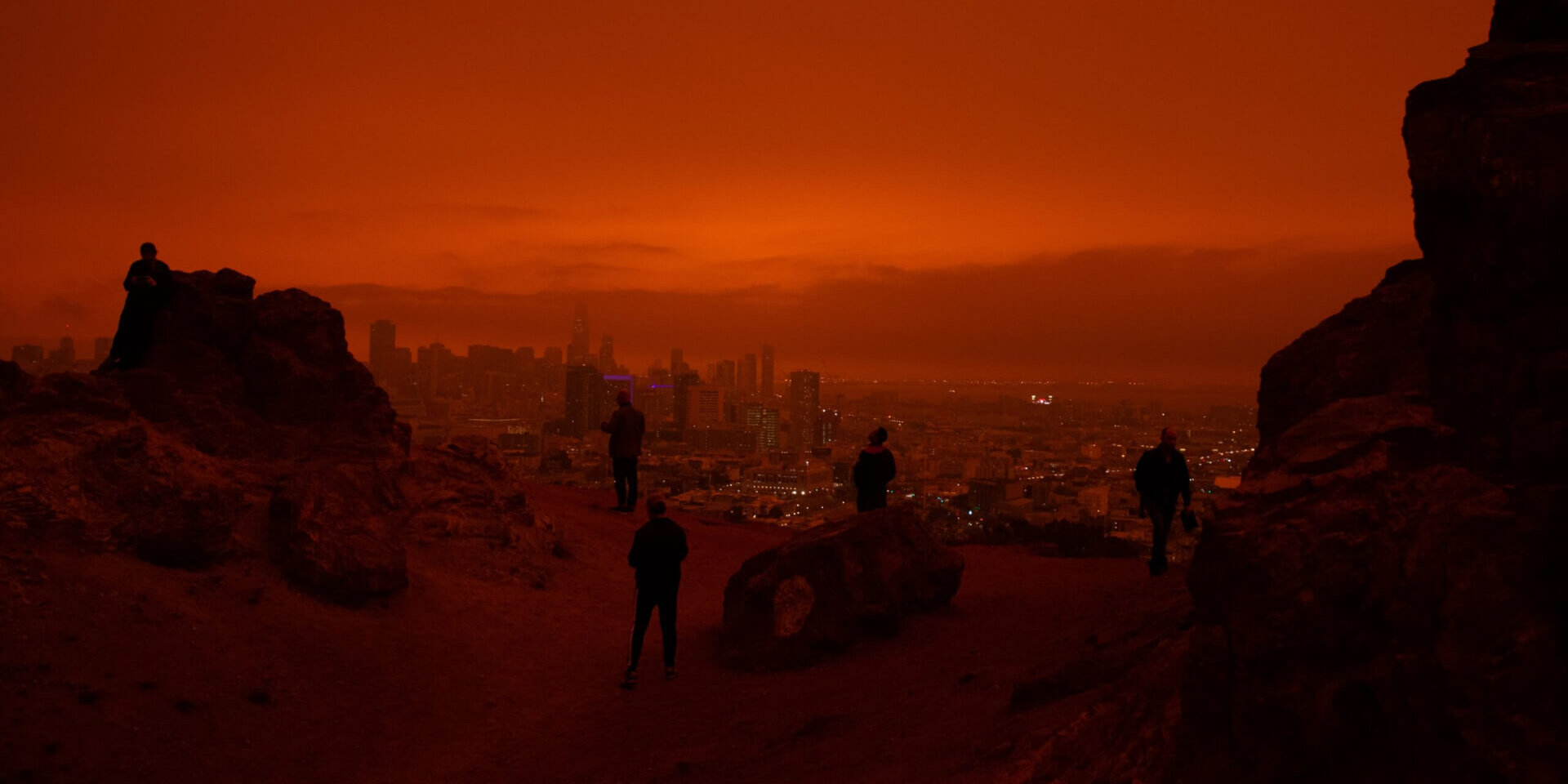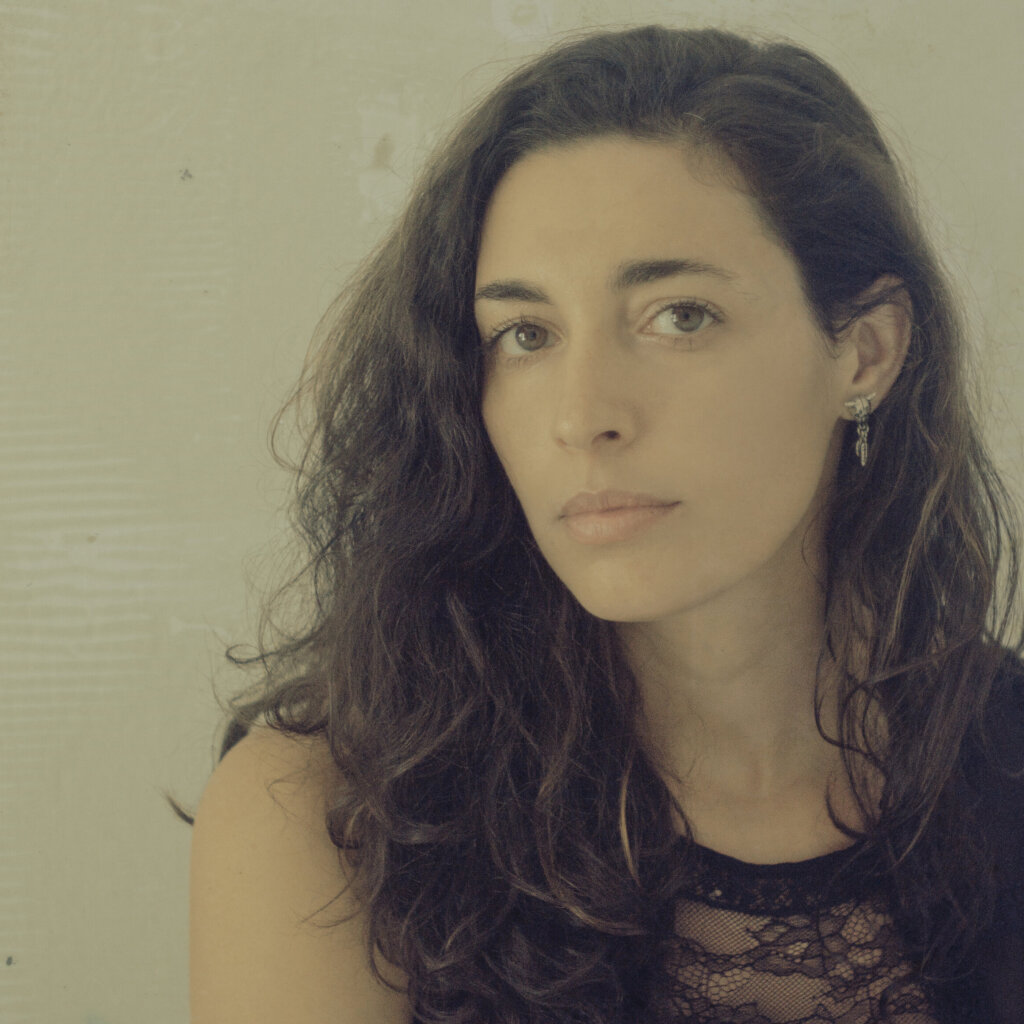
Scientists and researchers increasingly value science fiction for its contributions to anticipating future scenarios. As part of its mission to explore the directions in which changes in science and science systems are leading us, the Centre for Science Futures sat down with six leading science fiction authors to gather their perspectives on how science can meet the many societal challenges we will face in the next decades. The podcast is in partnership with Nature.
In our fourth episode, we had discussions with Fernanda Trías about how to bring together the arts and the sciences. She talks about the urgency to take actions in the face of dire realities such as ecological crises. She believes that through the localization of issues and solutions, we can make science more meaningful.

Fernanda Trías
Fernanda Trías was born in Montevideo, Uruguay, and is currently based in Colombia. An award-winning writer and instructor of creative writing, she holds an MFA in Creative Writing from New York University and has published four novels, two of them translated into English (The Rooftop, Charco Press 2020, and Pink Slime, Scribe 2023), as well as a short story collection.
Paul Shrivastava (00:03):
Hi, I’m Paul Shrivastava, and in this podcast series I’m talking to science fiction authors about the future. I think their unique way of looking at things can give us valuable insights into how we can create the kind of world we want and avoid the kind we don’t.
Fernanda Trías (00:24):
We are all hoping that science is going to come and save us from the disaster and the havoc that we wreaked, and that’s not the way it’s going to work.
Paul Shrivastava (00:32):
Today I’m speaking to Fernanda Trías, a Uruguayan novelist and short story writer. She’s also a lecturer in creative writing at the Universidad de los Andes in Bogotá. Her book, Pink Slime, was recognized as one of the best literary works by a female author in the Spanish-speaking world. We discussed her inspiration, whether dystopian horror can bring about change, and the importance of bringing the arts and sciences together. I hope you enjoy.
So welcome, Fernanda. Thank you very much for joining us on this podcast series. I’d like to begin by asking you if you can talk a little bit about your own background and your relationship with science.
Fernanda Trías (01:24):
Well, actually, I come from a family where science and art have always been intertwined. My father was a doctor. I grew up, for example, playing in the corridors of hospitals, and my father would talk about the human body, and for me it was very interesting. But at the same time, I had more like a humanistic inclination, so I ended up studying human studies. I worked for many years as a translator, but I specialized in medical texts. In translation, I found a way of having both, right, on the one side, languages that I love and, on the other hand, I could do research, learn.
Paul Shrivastava (02:07):
Wonderful. Your new exciting book that is getting translated, Pink Slime, into English – can you tell us a little bit about the general theme of the book and how you talk about science and the organization of science in this work?
Fernanda Trías (02:23):
Actually, pink slime is one of those things that I discovered when I was still doing medical translations. In this dystopian novel, there has been an environmental catastrophe, and I thought, well, let’s imagine a country where the thing they have to feed the population is this paste that is called ‘pink slime’, pejoratively. All the trimmings and all the little bits and pieces of the carcasses, the livestock, are heated at really, really high temperatures. Then they are centrifuged to remove the fat from the meat, and there results a paste that is very pink, that looks like toothpaste. The two main characters – the narrator is a woman and she takes care of a child who has a rare disease. One of the many symptoms that it has is the person is always hungry. The brain doesn’t receive the signal that says, OK, that’s enough. So it’s a very painful syndrome, and this woman is taking care of a child who cannot stop eating in a world where there is a shortage of food, and this pink slime is the main food available.
Paul Shrivastava (03:39):
That is so powerful. And one hope is that this kind of trope of horror and dystopia shocks people and gets them to change behaviours towards being more sustainable – either in nutrition of their own body, or in burning carbon, or what have you. Do you think science fiction can really bring about a change in mindset?
Fernanda Trías (04:03):
I don’t know, but every dystopian novel contains at least some echo of reality. I have the feeling that, as a society, we are in denial right now of what’s going on with climate change. And it’s normal because it’s so scary and also because… individuals – we don’t feel we can do much to change what’s going on. We feel this frustration, but that’s why I think it’s so important for art to bring the subject and to make it available for people because it creates a tangible example of what could happen. And suddenly we can imagine the whole world with all these consequence, and the details, and how this would affect normal, everyday people, and that’s how we can start talking about this.
Paul Shrivastava (05:00):
There are these ways of thinking of ourselves as separate from nature, but there is an alternative. The indigenous view of the world in many countries is much more holistic and much more inclusive, that we are nature, we are part of the web of nature, and if we do something to it, it also comes back and affects us. Would you think that that would be helpful and as overcoming some of these challenges?
Fernanda Trías (05:31):
I love what Vandana Shiva, Indian philosopher, ecofeminist. She talks about the eco-apartheid, that there’s a separation between humans and the rest of nature. It would be important for science to learn from that paradigm, because many of these visions from indigenous peoples—here in Colombia, we have many—they can be regarded as less scientific. In that sense, science sometimes can be very arrogant, right? That’s why I think that the ecofeminist way of thinking could help a lot. And also having more women working in science could bring about that change. And right now in Latin America, there are authors that are looking towards these other forms of knowledge and writing science fiction from there. I think that’s very, very interesting.
Paul Shrivastava (06:30):
Very interesting. Do you reckon that certain scientific and technological developments are actually damaging to earth systems, and what could be the role of science fiction in preventing that?
Fernanda Trías (06:47):
What I sometimes have the feeling is that science is like a good mother that is running behind the spoiled child that is wreaking havoc in the house. And the mother is running behind just picking up the toys, right? So science right now is this safety net that we are all hoping that science is going to come and find a way to save us from the disaster and the havoc that we wreaked, and that’s not the way it’s going to work.
If we take the case of food, for example, there are estimates that the planet will need to produce 60% more food by 2050 to sustain the world’s growing population. That’s gonna be really difficult. There are scientific innovations already going in that direction, thinking, well, how can we genetically modify crops or seeds to make them heat resistant? But then if you think about it, around 30% of the food produced in the world right now is lost or wasted, and it’s hand in hand with capitalism, of course. So what we need is a change. Science fiction helps us, even if it doesn’t come up with a solution, of course, but at least it helps exploring the problem and it helps posing the question.
Paul Shrivastava (08:01):
The point you’re making about arts or narratives shaping the question – this goes to the heart of what some people are calling transdisciplinary scientific research, where research is done in co-creation with the stakeholders.
Fernanda Trías (08:17):
And that’s why it’s so important to integrate, you know, the humanities and science. Because the problems that we are facing right now spill across borders and fields of knowledge. So we take climate change, it’s not just an environmental issue. Any decision has an enormous economic and social impact. We need to think about the needs of each community in its context before implementing whatever we want to implement. You have to think how it’s going to work in community with those particular challenges.
Paul Shrivastava (08:53):
So this is very important point. The issue of localizing, not just being stuck with general solutions, but customizing them to the local cultural context. That is really the key to solution, and that to me is, again, somewhat outside the realm of traditional, normal science. What suggestions might you have for scientists to engage in this kind of outputs?
Fernanda Trías (09:21):
This idea that scientific research and art are separate is very widespread. However, I think they have more things in common than we think because they both require curiosity and then the willingness to connect to ideas that look far apart.
Paul Shrivastava (09:40):
Connecting the dots to make a bigger pattern. And this is, to me, an artistic move. It is not a scientific move.
Fernanda Trías (09:49):
Exactly, but I think probably the best scientists are the one that have this kind of thinking, you know, this creative mind. Creativity is something that is not just for some people that are artists. We are all creative people. When I started wri… thinking about the novel that would later be Pink Slime, I had some elements that looked completely unrelated. For example, the pink slime is paste, the child with this particular syndrome… This is like a, you know, like a patchwork, but for me as a writer, I need to trust this intuition. I knew they belonged together. I didn’t know how.
Paul Shrivastava (10:33):
Thank you for listening to this podcast from the International Science Council’s Centre for Science Futures done in partnership with the Arthur C. Clarke Center for Human Imagination at UC San Diego visit futures.council.science to discover more work by the Centre for Science Futures. It focuses on emerging trends in science and research systems and provides options and tools to make better informed decisions.
Paul Shrivastava, Professor of Management and Organizations at Pennsylvania State University, hosted the podcast series. He specialises in the implementation of Sustainable Development Goals. The podcast is also done in collaboration with the Arthur C. Clarke Center for Human Imagination at the University of California, San Diego.
The project was overseen by Mathieu Denis and carried by Dong Liu, from the Centre for Science Futures, the ISC’s think tank.
Photo from Patrick Perkins on Unsplash.
Disclaimer
The information, opinions and recommendations presented in this article are those of the individual contributor/s, and do not necessarily reflect the values and beliefs of the International Science Council.